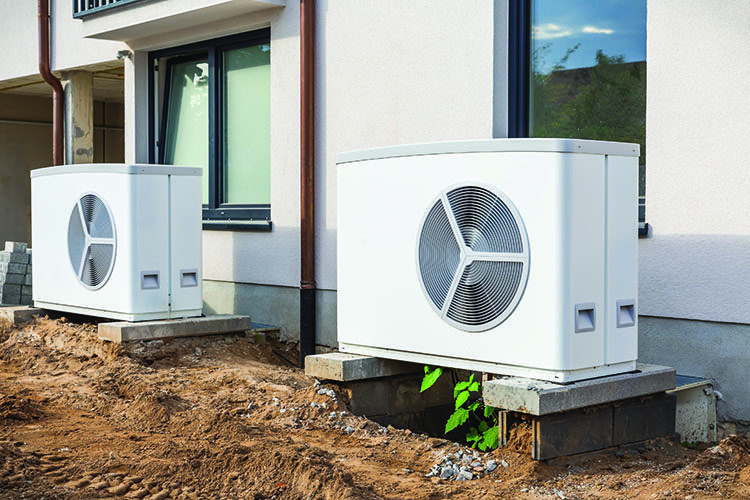Energy Conservation Drives Heat Pump Trends in Northern Markets
With such a range of product options, it’s clear this equipment will make up an increasingly larger slice of the pie for the HVAC industry.

Thanks to both green initiatives and greenbacks, heat pumps have spread throughout northern markets; little evidence suggests their popularity will cool anytime soon. They have long been a staple in the southern U.S. states, warming up chilly winter nights and cooling down steamy summer afternoons. In the north, however, heat pumps traditionally have been pushed aside in lieu of furnace and air conditioning combos to manage the region’s extreme temperatures.
Heat pumps transfer heat from outside to warm your home in the winter and do the opposite during the summer. A heat pump can pull from three areas: the air, a water source or the relatively constant temperature in the ground. By moving heat instead of generating it, heat pumps are an overwhelmingly green option and increasingly economical.
Today, tax credits and incentives combine to make the more expensive heat pump an attractive solution for homeowners. With those factors considered, heat pumps are comparable in price to traditional systems. At the same time, technological advancements in heat pump design have made them a solid option for cold-weather markets.
Government incentives were put in place to promote the energy efficiency of heat pumps because they offer lower carbon monoxide emissions and rely on electricity rather than a limited resource such as oil. As opposed to oil, up to 80 percent of the energy used by a heat pump is renewable. They even function better than conventional electric equipment, supplying heat with as little as one-fifth the electricity of their counterparts.
Meanwhile, consumers appreciate the pump’s lower operating costs — typically about $500 less per year. Roughly half of the energy costs for the average American home come from the energy used by an HVAC system.
Those factors drive product growth previously unseen in Northern markets. While the heat pump segment remains small in this region, it is growing exponentially as distributors and contractors begin responding to consumer demand for these units.
This segment has seen steady growth since the turn of the century. Heat pumps are currently installed in more than 17 million U.S. homes. In 2001, 1.44 million air-source heat pumps were shipped in the United States, reports the Air-Conditioning, Heating and Refrigeration Institute and Statista.com (https://bit.ly/4aG1rfE). By 2021, it had increased to 3.92 million — an increase of nearly 300 percent.
And now, heat pumps have surpassed gas furnaces in popularity. In 2022, Americans purchased 4.3 million heat pumps but only 3.9 million furnaces, according to Canary Media, an energy-focused news outlet (https://bit.ly/48phKfd).
For many years, heat pumps were shrugged off by Northern consumers because they were less effective in particularly frigid temperatures. Those homeowners relied on their HVAC system to provide heat more than it did air conditioning, so a gas furnace was the most economical option.
Today’s technologies, however, minimize those concerns. Dual-fuel units operate on gas and electricity, using smart thermostats to seamlessly switch between the two for the most efficient option based on outdoor air temperature. Combined with lower operating costs and up-front financial incentives, heat pumps are a fiscally wise option for homeowners replacing their HVAC systems.
For Northern contractors, this rising demand is a sign that it’s time to further heat pump education among employees. There’s no doubt this trend is gaining traction, and it’s important to take advantage of the market growth as it hits locally.
Distributors, too, need to prepare by staying in contact with their customers to anticipate product demand for heat pumps. In the meantime, educating staff and dealers alike will be key to securing a portion of this $88.7 billion global market expected to grow 9.4 percent annually through 2030, according to Grand View Research (https://bit.ly/3S6wtGm).
There’s plenty to manage for this business segment, of course. Beyond the popular air-source heat pumps, legitimate benefits are now available for lesser-known options. Consider that mini-split heat pumps do not require ductwork because they use a compressor pump to move refrigerant liquids between exterior and interior coils. Not having ductwork boosts energy efficiency when air isn’t lost to duct leaks.
Meanwhile, geothermal systems pulling from ground temperatures are known as the most cost-effective and environmentally friendly products on the market, reducing energy consumption by up to 60 percent.
With such a range of product options, it’s clear heat pumps will make up an increasingly larger slice of the pie for the HVAC industry moving forward. Prioritizing heat pump inventory and training for distributors and dealers alike is the best way to capture that growth now and for years to come.
Michael Hendershott is a regional HVAC business unit president at Marcone, a distributor in the appliance parts, HVAC, plumbing, commercial kitchen and pool/spa spaces. He holds a degree in accounting and finance from the University of South Florida and draws from nearly 25 years of experience in the HVAC industry.




